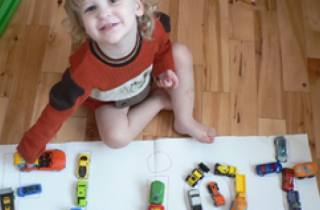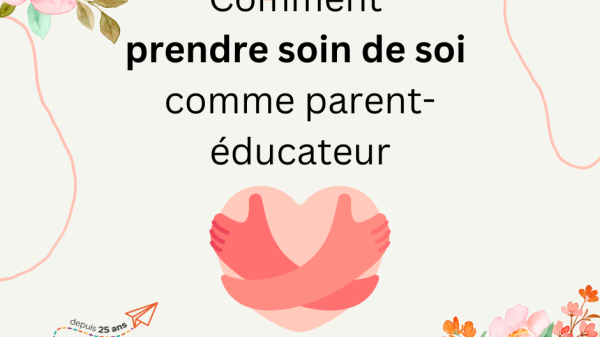Playing with letters

Already at an early age, it is possible to play with letters to introduce young children to written language. There is no need to do anything formally; just enjoy yourself!
Here are a few quick ideas:
Use magnet letters on the fridge, in the bathtub or on a baking sheet. The baking sheet becomes a mobile board that enables children to play with letters in their bed, in the car or on the couch.

Take advantage of meals to learn the names of letters. You can use soup noodles in the shape of letters, Alpha Bits cereals or even draw letters with ketchup.
Place foam puzzle pieces with letters on the floor. You can walk around and name the letter on which you’re standing or you can call letters and your child needs to step on the right letter.
Find letter-shaped objects in everyday life. For example, an umbrella handle looks like a J, the hook to hang up a jacket is shaped like an S, and the swing is supported by an A-frame.

Draw letters on plastic balls. Let your children throw the ball and name the letter. If you want to raise the level of difficulty, let your children throw many balls into a bowl and then try to create syllables.
Stick letters on bowling pins or plastic bottles. Then roll a ball and ask your child to name the letters on the pins that were knocked down.
Draw letters on the ground using chalk (outside) or tape (inside), then ask your children to follow the outline of the letter by walking, by rolling a ball or by transforming it into a street for a small car.

Try to find hidden letters in a drawing. Very often, one can imagine a letter in an image. Do you see the lower-case “f” formed by the stem of the plant or the upper-case “M” shape of the flower?
Cut out or circle letters in flyers, group the same letters together (preferably ones with different fonts), create a personalized alphabet, write out words such as your children’s names, compare lowercase and uppercase letters…
Look out for letters in company logos like IGA, the M in McDonald or Super C. The aim is not to foster brand recognition, but to show your children that letters are everywhere! Compare these letters with the ones in their first name: Super C is the C from Cloé!
Is it time for crafts? Children always enjoy dabbling in paint. Take advantage of this interest and let them trace letters in paint with their fingers and stick pom poms onto the drawing of a letter.
In all these examples, children learn through play. Nothing has to be formal. Playing with letters is very important for children. Seeing them, naming them, touching them, understanding them, observing them, hearing their sounds, tracing them out.
Unleash your imagination and discover all the letters hiding in your life!
The opinions expressed in this article are those of the authors and should not be interpreted as reflecting the position of AQED.



